Dr. Jimena Aracena
 My general area of research is animal behavior. I’m especially interested in how animals
use information about their environment to make decisions about eating, foraging for
food, and mating. Even animals as tiny as fruit flies with brains smaller than a pinhead
can make very complex choices about eating the best food or choosing a good mate.
My general area of research is animal behavior. I’m especially interested in how animals
use information about their environment to make decisions about eating, foraging for
food, and mating. Even animals as tiny as fruit flies with brains smaller than a pinhead
can make very complex choices about eating the best food or choosing a good mate.
I work mostly with fruit flies, but I have also done projects with other insects, such as crickets, ants, houseflies, and honeybees, and also with freshwater fish. The questions I like to ask apply to all kinds of animals and humans, so I use fruit flies as a model. Some of the questions we ask in the lab include: Do flies prefer some types of sugars over others? How hungry do they have to be to eat food that they don’t like? Can they count how many food sources there are in one patch of food vs. another patch? When forced to choose, would a fly rather eat or mate? My students have presented their results for these kinds of projects at various local, state, and national scientific meetings.
Dr. Renan Bosque
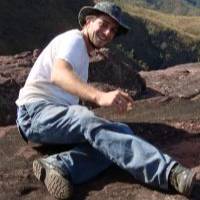 My main passion is to explore and better understand complex evolutionary scenarios.
I currently investigate the origins of mimicry on coral snakes and the evolution of
defensive mechanisms based on visual signaling. To achieve my research objectives,
I use an integrative approach based on several areas of science ranging from behavior,
niche modeling, genetics, phylogeography and morphology.
My main passion is to explore and better understand complex evolutionary scenarios.
I currently investigate the origins of mimicry on coral snakes and the evolution of
defensive mechanisms based on visual signaling. To achieve my research objectives,
I use an integrative approach based on several areas of science ranging from behavior,
niche modeling, genetics, phylogeography and morphology.
Dr. Rickey Cothran
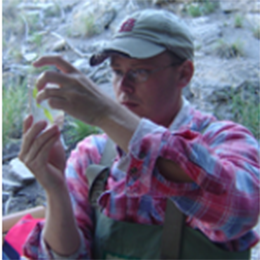
Our lab studies the evolutionary ecology of freshwater ecosystems. Our research takes us to some very cool freshwater habitats ranging from small springs to large natural lakes and reservoirs. We explore a diverse array of questions at multiple levels of biological organization. For example, we are interested in how natural and human caused changes in the environment affect how sexual selection (i.e. who gets to mate and why they do so) operates in populations, the mechanisms that allow species to coexist in nature, and how contaminants affect the ecology of freshwater ecosystems. To learn more about our research check out our website.
Dr. Mark Garcia
 My field of research is Integrative Organismal Biology, with a strong emphasis on
animal behavior and physiology. I am particularly interested in how prior social experience
influences an individual’s current behavior. For example, individuals who survive
a predator attack become more cautious, individuals who win an aggressive tend to
fight harder in their next contest, and individuals with parental experience become
better parents. While there are several examples of these “experience effects”, the
physiological mechanisms (e.g., steroid hormones, gene expression, epigenetics) mediating
these experience-induced behavioral changes are still unclear. My research seeks to
address this open avenue of research as well as expand into addressing questions of
when and why these experience effects evolved.
My field of research is Integrative Organismal Biology, with a strong emphasis on
animal behavior and physiology. I am particularly interested in how prior social experience
influences an individual’s current behavior. For example, individuals who survive
a predator attack become more cautious, individuals who win an aggressive tend to
fight harder in their next contest, and individuals with parental experience become
better parents. While there are several examples of these “experience effects”, the
physiological mechanisms (e.g., steroid hormones, gene expression, epigenetics) mediating
these experience-induced behavioral changes are still unclear. My research seeks to
address this open avenue of research as well as expand into addressing questions of
when and why these experience effects evolved.
For this work I use the Mangrove Rivulus (Kryptolebias marmoratus) fish as my research subject. This fish is endemic to red mangrove forests and can be found as far North as Central Florida and as far South as the Amazon basin. This fish is unique in that it is a self-fertilizing, hermaphroditic vertebrate; one of only two know species in the world. This unique reproductive tactic can generate several hundred individuals all with identical genetic background, allowing us to tease apart the environmental and genetic contributions to an animal’s behavior.
If my research program interests you, I encourage you to email me or swing by my office to talk further about potential undergraduate research experience opportunities.
Dr. Eric Paul
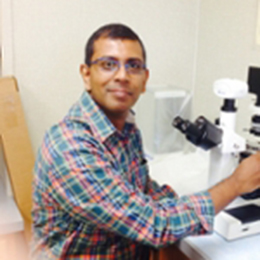 Staphyloccocus aureus is a benign microbe living in the nose and on the skin of approximately
1/3 of the human population. Methicillin-resistant Staphylococcus aureus (MRSA) is a predominantly hospital acquired pathogen that is recently seen with increasing
frequency in the community. Our lab looks at the spread of the community acquired
MRSA (CA-MRSA) vs. hospital acquired MRSA (HA-MRSA) in the student populations and
their pathogenicity.
Staphyloccocus aureus is a benign microbe living in the nose and on the skin of approximately
1/3 of the human population. Methicillin-resistant Staphylococcus aureus (MRSA) is a predominantly hospital acquired pathogen that is recently seen with increasing
frequency in the community. Our lab looks at the spread of the community acquired
MRSA (CA-MRSA) vs. hospital acquired MRSA (HA-MRSA) in the student populations and
their pathogenicity.
In addition to MRSA research, my laboratory investigates microbial pathogenicity under microgravity: Previous experiments done in our lab showed that microbes exposed to microgravity exhibited greater motility than the control static cultures. Both E. coli and Pseudomonas aeruginosa exhibited increased motility indicating increased virulence. We also showed that two strains of Pseudomonas aeruginosa (PA01 and PA14) caused necrosis in tissue using lettuce leaves. We now plan to observe host cell response when challenged with normal and micro-gravity grown bacterial cultures.
Dr. Daniel Rocha
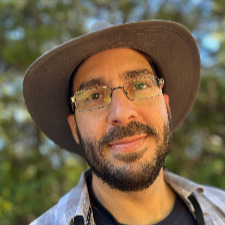 I am a wildlife ecologist with a strong interest in the ecology of large mammals and
the application of analytical methods in wildlife studies. My research focuses on
understanding how environmental and human-related factors influence population dynamics,
species distributions, and community composition across large spatial scales. To achieve
this, I employ statistical models that explicitly account for both ecological and
sampling processes.
I am a wildlife ecologist with a strong interest in the ecology of large mammals and
the application of analytical methods in wildlife studies. My research focuses on
understanding how environmental and human-related factors influence population dynamics,
species distributions, and community composition across large spatial scales. To achieve
this, I employ statistical models that explicitly account for both ecological and
sampling processes.
As a native of Brazil, I am deeply intrigued by the Amazon, one of the most biodiverse
yet poorly studied regions on Earth. Since 2011, I have been involved in the research
and conservation of Amazonian mammals. My most recent projects examine how large terrestrial
mammals are responding to rapid land-use changes in the southern Brazilian Amazon,
with the aim of informing better conservation practices and sustainable land-use planning.
I also lead a study on the spatial and population ecology of terrestrial mammals in
the Oklahoma City Metropolitan Area. This research explores the impacts of urbanization
gradients on wildlife, with the goal of developing strategies to create more wildlife-friendly
urban environments.
Dr. Marcella G. Santos
 I am an evolutionary biologist who studies the incredible variety of life on Earth
and the processes that shape biodiversity. In our lab, we work with fish, lizards,
and other animals, gathering data on their genetics, physical traits, habitats, and
geographical distributions. Our goal is to understand why so many species exist and
how their environment influences their DNA. We also explore how closely related species
evolve and sometimes mix through processes like speciation and hybridization. This
research matters because it helps us predict how species will respond to environmental
changes, protect their genetic diversity, and guide conservation efforts to preserve
our planet's ecosystems.
I am an evolutionary biologist who studies the incredible variety of life on Earth
and the processes that shape biodiversity. In our lab, we work with fish, lizards,
and other animals, gathering data on their genetics, physical traits, habitats, and
geographical distributions. Our goal is to understand why so many species exist and
how their environment influences their DNA. We also explore how closely related species
evolve and sometimes mix through processes like speciation and hybridization. This
research matters because it helps us predict how species will respond to environmental
changes, protect their genetic diversity, and guide conservation efforts to preserve
our planet's ecosystems.
Dr. Pragya Sharma
 Research Interest: My research interests lie at the interface of metabolism and cancer.
I am interested in understanding how metabolic pathways influence human health. Altered
metabolism is considered one of the hallmarks of cancer. Some of the profound metabolic
changes include an increase in glucose consumption and elevated glycolysis, glutamine
addiction, and an increase in fatty acid synthesis. Malignant cells acquire changes
in anabolic and catabolic pathways to meet their high metabolic and energy demands.
Emerging evidence suggests that metabolic deregulations play a crucial role in supporting
cancer cell survival, proliferation, and tumor growth. Metabolic rewiring allows cancer
cells to use aerobic glycolysis and upregulate the synthesis of biomass to facilitate
tumorigenesis. However, due to tumor plasticity, different tumor types have different
metabolic dependencies that allow them to adapt to either aerobic glycolysis or oxidative
phosphorylation (OXPHOS), based on the changes in the tumor microenvironment. One
of the focus of my research is to study the novel genes that regulate cancer metabolism
and understanding how metabolic genes affect tumor plasticity. I am also interested
in unraveling the metabolic phenotypes of different cancer types. These studies will
advance our understanding of fundamental cancer cell biology and provide a better
understanding of the new chemotherapy treatments targeting cancer metabolism. I am
also interested in evaluating the role of glycolytic enzyme inhibitors as anticancer
agents.
Research Interest: My research interests lie at the interface of metabolism and cancer.
I am interested in understanding how metabolic pathways influence human health. Altered
metabolism is considered one of the hallmarks of cancer. Some of the profound metabolic
changes include an increase in glucose consumption and elevated glycolysis, glutamine
addiction, and an increase in fatty acid synthesis. Malignant cells acquire changes
in anabolic and catabolic pathways to meet their high metabolic and energy demands.
Emerging evidence suggests that metabolic deregulations play a crucial role in supporting
cancer cell survival, proliferation, and tumor growth. Metabolic rewiring allows cancer
cells to use aerobic glycolysis and upregulate the synthesis of biomass to facilitate
tumorigenesis. However, due to tumor plasticity, different tumor types have different
metabolic dependencies that allow them to adapt to either aerobic glycolysis or oxidative
phosphorylation (OXPHOS), based on the changes in the tumor microenvironment. One
of the focus of my research is to study the novel genes that regulate cancer metabolism
and understanding how metabolic genes affect tumor plasticity. I am also interested
in unraveling the metabolic phenotypes of different cancer types. These studies will
advance our understanding of fundamental cancer cell biology and provide a better
understanding of the new chemotherapy treatments targeting cancer metabolism. I am
also interested in evaluating the role of glycolytic enzyme inhibitors as anticancer
agents.
Dr. Vijay Somalinga
 Structure dictates function; a statement that applies to all matter. In biological
systems, this statement applies to everything from anatomical to molecular structure.
At a molecular level, proteins essential for life processes have a specific 3-D structure.
This structure dictates the function of the myriad types of proteins found in all
living organisms.
Structure dictates function; a statement that applies to all matter. In biological
systems, this statement applies to everything from anatomical to molecular structure.
At a molecular level, proteins essential for life processes have a specific 3-D structure.
This structure dictates the function of the myriad types of proteins found in all
living organisms.
My lab is studying protein structure-function relationship and how proteins affect physiological processes in microorganisms. Our current work is focused on fairly well studied family of proteins called carbonic anhydrases. In particular, my lab is interested in understanding the structure and function of carbonic anhydrases from pathogenic bacteria and amoeba. Specifically, we are trying to solve the structure of carbonic anhydrases from Streptococcus sanguis, an opportunistic pathogen responsible for infective endocarditis and Rhodococcus hoagii, an important veterinary pathogen and an emerging human pathogen. Understanding the structure of these essential proteins will help us in designing inhibitors to treat infections caused by these pathogens. Furthermore, the physiological roles carbonic anhydrases play in these organisms remain unknown. My lab is also interested in creating targeted deletions of the genes encoding for carbonic anhydrases to better understand their physiological role in these pathogens.
Dr. Muatasem Ubeidat
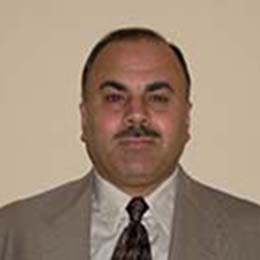 Dictyostelium discoideum is a powerful eukaryotic biomedical model organism to study
developmental regulation and cellular signaling because of the ease of genetic, biochemical
and cell biology approaches. Upon starvation, single-celled amoebae emit cAMP and
migrate toward aggregation centers. This gives rise to a discrete multicellular structure
called the "slug". In the migrating slug, the precursors for stalk and spore cells
become recognizable and are localized in specific regions. Prestalk cells are located
in the anterior 20% of the slug and prespore cells occupy the remainder. The developmental
process of this organism depends on environmental and internal signals and can be
divided into two phases; the formation of a moving slug from solitary amoeba upon
starvation and the switch from a slug to fruiting body that holds the spores, for
dispersal, on an aerial stalk. The slug-to-fruiting body switch (culmination) is regulated
by ammonia, O2, light and other factors, possibly acting via prestalk tip cells.
Dictyostelium discoideum is a powerful eukaryotic biomedical model organism to study
developmental regulation and cellular signaling because of the ease of genetic, biochemical
and cell biology approaches. Upon starvation, single-celled amoebae emit cAMP and
migrate toward aggregation centers. This gives rise to a discrete multicellular structure
called the "slug". In the migrating slug, the precursors for stalk and spore cells
become recognizable and are localized in specific regions. Prestalk cells are located
in the anterior 20% of the slug and prespore cells occupy the remainder. The developmental
process of this organism depends on environmental and internal signals and can be
divided into two phases; the formation of a moving slug from solitary amoeba upon
starvation and the switch from a slug to fruiting body that holds the spores, for
dispersal, on an aerial stalk. The slug-to-fruiting body switch (culmination) is regulated
by ammonia, O2, light and other factors, possibly acting via prestalk tip cells.
Myxococcus xanthus is a gram-negative bacterium with a developmental life cycle, social behavior and multicellular morphogenesis that resemble the eukaryotic Dictyostelium discoideum. This resemblance between a prokaryotic and a eukaryotic organism can hold key information about the common evolutionary ancestor that between these social organisms and probably their relation to other organisms with similar characteristics.
On the basis of this resemblance, our research is focused on exploring the life cycle of both organisms (timing and morphology) and to study the effects of different environmental factors like oxygen, light, ammonia, cAMP and cell density on the behavior of both organisms during development specially during morphogenesis. Genomic and triscriptome analysis will follow at later stage of this project.
Dr. Liedson Carneiro
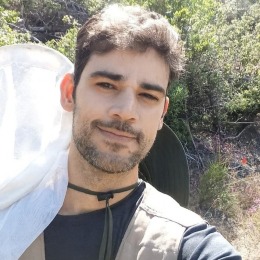
I am a plant ecologist whose research integrates field ecology, evolutionary biology, and quantitative network analyses to understand how floral traits, pollinator behavior, and environmental change influence the success and persistence of plant populations and communities.
My interests include pollination ecology, floral biology and evolution, plant–pollinator networks, and crop pollination. I combine detailed field experiments with analytical approaches to test how species interactions drive evolutionary outcomes, community assembly, and ecosystem services.
Recently, I have used serpentine seeps in northern California as a community model to study pollinator-mediated plant–plant interactions and coexistence. I also investigate floral oil systems, which include the unique floral-oil-producing species Krameria lanceolata, native to Oklahoma, as a model for pollinator-mediated natural selection and floral trait evolution in specialized plants.
For publications and research updates, please visit my website.
